Monkey事件
一、Monkey参数
(1)帮助类参数
monkey -h
(2)日志级别
adb shell monkey -v -v -v 随机事件数(-v表示日志信息级别,越多越详细)
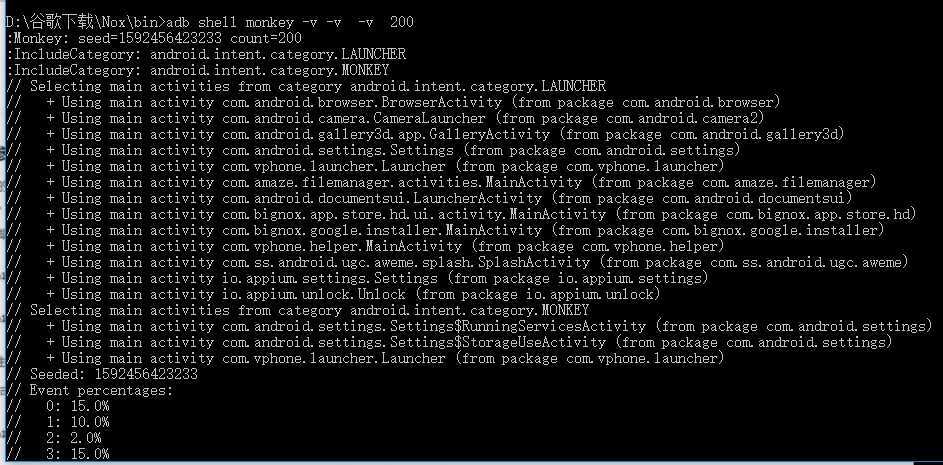
(3)事件类参数
1)执行指定的脚本
adb shell monkey -f <scriptfile> <event-count>
eg: adb shell monkey -f /mnt/sdcard/test1
2)伪随机数生成种子值
使用-s命令可以重复执行之前的伪随机操作,本身每次执行伪随机事件操作也会默认生成一个seed值
adb shell moneky -s <seed> <event -count>
eg: adb shell monkey -s 666 100
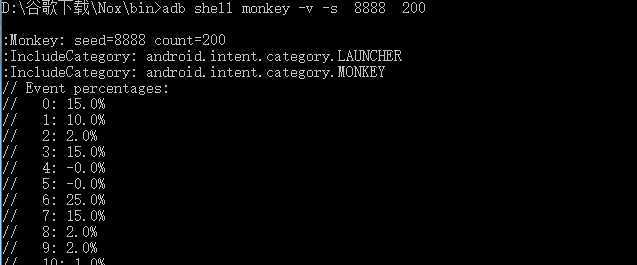
3)设置间隔如果你希望在每个命令之间加上固定的间隔时间,可以用 --throttle(注意前面是)命令。(想要打印日志文件就加-v)
adb shell monkey --throttle <milliseconds>
eg:adb shell monkey --throttle 1000 100

(4)调整触摸事件百分比(0:触摸事件;1:手势事件..)
如果你希望调整触摸事件的百分比,记住使用 --pct-touch
adb shell monkey --pct-touch
eg:adb shell monkey --pcy-touch 30(触摸事件变成30%) 200
<precent>--pct-touch:后面接触摸事件百分比
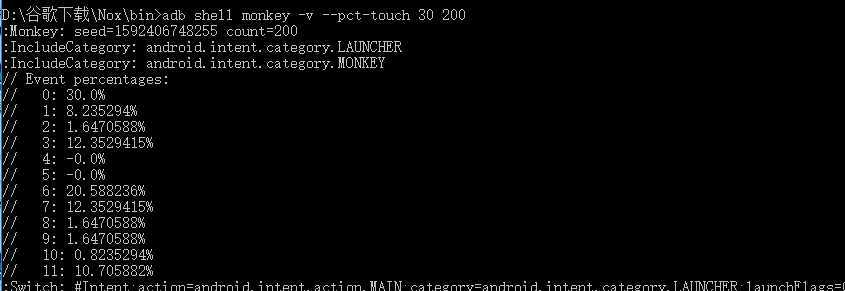
(5)调整手势事件百分比
adb shell monkey --pct-motion
eg:adb shell monkey -v -v --pct-motion 40(手势事件变成40%) 200
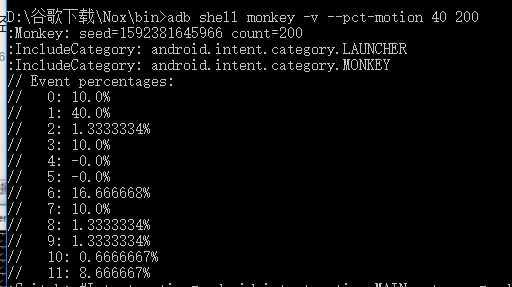
同时调整手势触摸事件
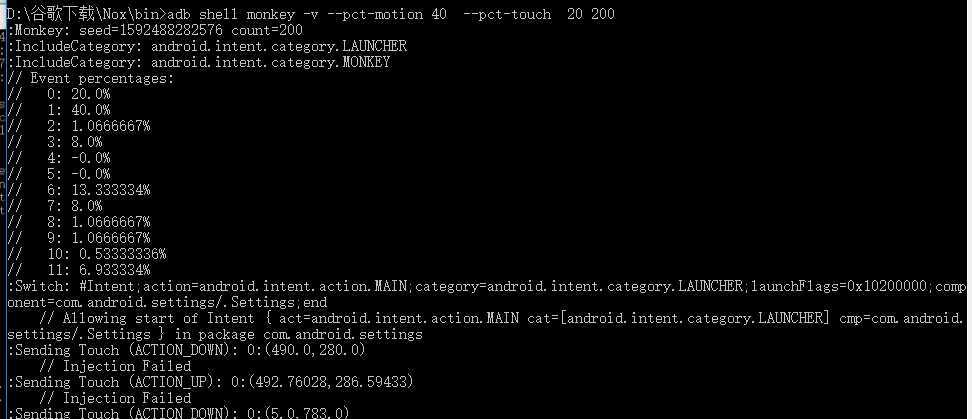
(6)调整应用启动事件百分比(8)
如果你希望应用启动事件的百分比,记住使用--pct-appswitch
adb shell monkey --pct-appswitch <precent>
eg:adb shell monkey -v --pct-appswitch
--pct-appswitch:后面接应用事件百分比
应用启动事件(即activity launches)俗称打开应用,通过调整startActivity()方法最大限度地开启package下的所有应用
(7)约束类参数
①包约束
-p:后面接一个或多个包名(<allowed-package-name>),如果应用需要访问其他包里的Activity,那相关的包也需要在此同时指定,如果不指定任何包
monkey将允许系统启动全部包里的Activity
adb shell monkey -p <allowed-package-name> <event-count>
eg:adb shell monkey -p com.ss.android.ugc.aweme 500
两个Activity:adb shell monkey -p com.ss.android.ugc.aweme -p com.tencent.mm 500

②activity类约束
如果你希望将monkey限制在一个或者几个类别中,使用以下命令:
adb shell monkey -c <main-category> <event-count>
以下命令表示进行Intent.CATEGORY_LAUNCHER类别的Activity并发送1000个随机事件
adb shell monkey -c Intent.CATEGORY_LAUNCHER 1000
(8)调试类参数
①应用程序崩溃后继续发送事件
如果你希望monkey在应用程序崩溃后继续发送事件,则用--ignore-crashes命令
adb shell monkey --ignore-crashes <event-count>
在设置此选项后,当应用程序崩溃时,monkey将继续运行到计数完成,如果不设置,则可能异常停止
②超时错误继续发送事件
如果你希望monkey在任何超时错误后继续发送事件,则需要用到 --ignore-timeouts指令
adb shell monkey --ignore-timeouts
在设置此选项后,当程序发生超时错误时,monkey将继续完成
③应用程序权限错误发生后继续发送事件
如果你希望monkey在程序错误发生后继续发送事件,则用--ignore-security-exceptions
adb shell monkey --ignore-security-exception
在设置此选项后,程序出任何错误,monkey也会继续运行
④其他
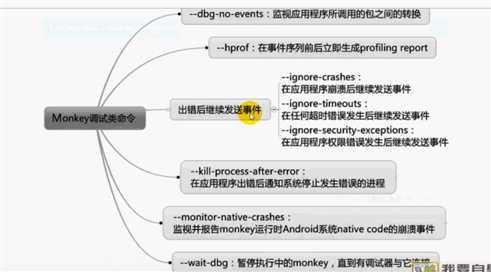
原文:https://www.cnblogs.com/Eliphaz/p/13145140.html